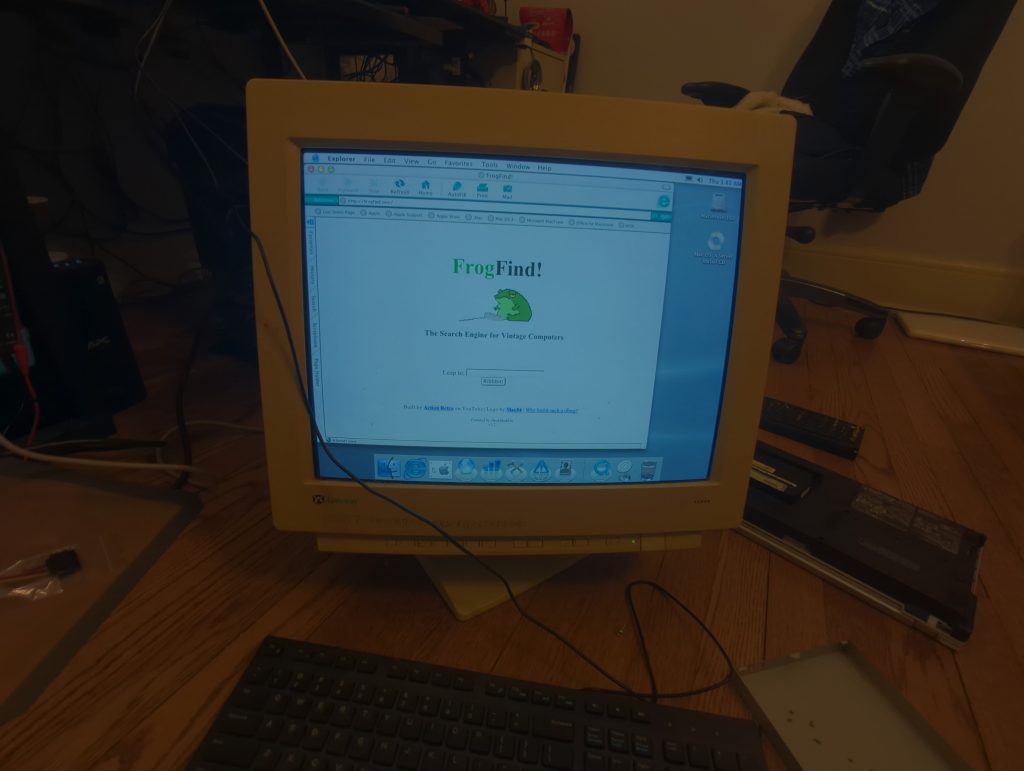Posted on April 13, 2025
Marathon Computer iRackDV (G3)

This story starts with a post on Mastodon by Sharewarewolf who was giving away a Marathon Computing iRackDV.
This was a product so strange and compelling I knew I wanted it.
There is very little information about Marathon Computer, or the iRack, most of what is available is limited to a some old forum threads such as those: here and here
and a few old news articles and press releases about the product, or similar ones. Such as this one in MacObserver and this one in CNET
All of this scattered coverage tells the story of a company and product that didn’t have a narrowly targeted market in mind, is the iRack for musicians who want to rack a mac for Music production? for consumers who are trying to repurpose an iMac with a failed CRT? or for network administrators who want a rack mount unix system to run web services in the early days of the dotcom boom?
The iRack seems like it maybe wouldn’t be particularly amazing at any of these things, at least by our modern standards where we are used to much more customized machines, but honestly the idea of using it as a web server spoke to me.My first thought when I saw it, was “wow this is a product that could have only been made in the very early 2000s” due to it’s proximity to the dotcom boom and the fact that it predates the X-Serve, Apple’s own foray into the rack mounted computer market that aimed to capitalism on a huge demand for rack mount compute from the new data center market caused by the dotcom boom and by the ever increasing prevalence of network and “cloud” services. Also of course at this time Apple had a fairly modern Unix system with a specific server version available that actually made Macs well suited for server applications, and I thought that would all be perfect for the iRack.
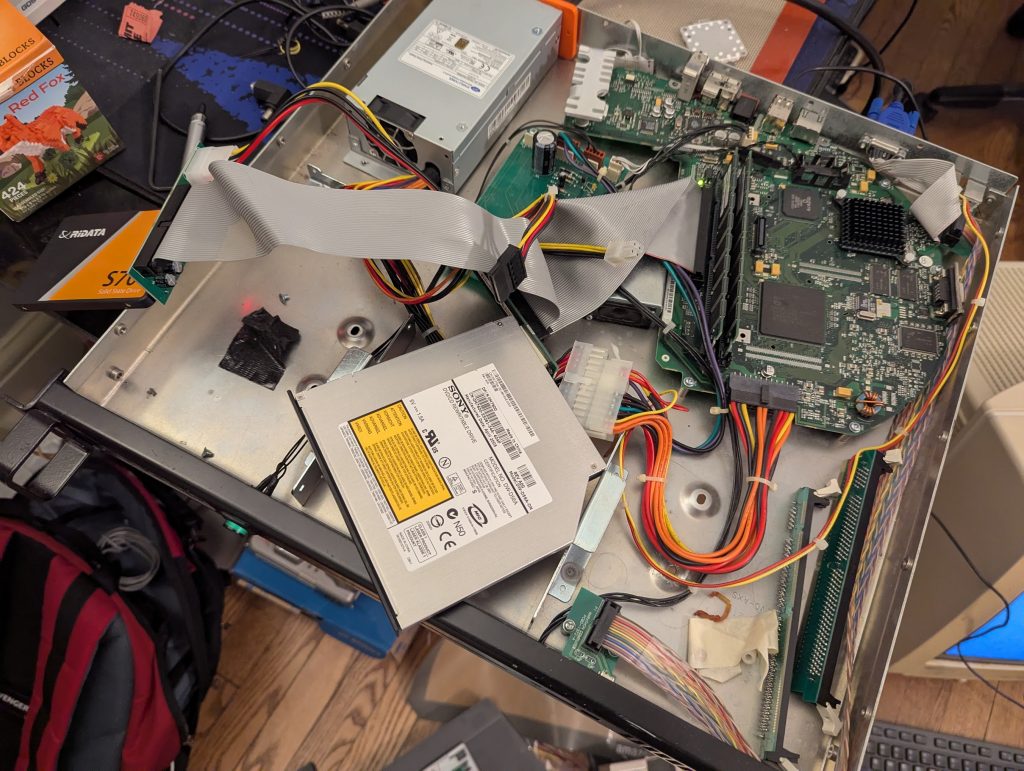
When I first attempted to boot the iRack I got nothing, the machine would spin up the PSU fan for a moment after pressing the power button and then shut down. I used a random ATX PSU I had around to confirm that the issue was with the included PSU, that resulted in first a beep code (for memory) and after removing the RAM from the questionable right angle adapters that Marathon designed, with unlength matched traces, no shielding and long legs on the DIMMS, I got a chime and the flashing folder icon. Success!
I purchased a replacement PSU, a more modern FlexATX unit that could be easily adapted to the case with a 3D printed adapter along with a cheap basic SSD and an IDE to SATA adapter so I could use the drive.
I also downloaded Mac OSX server 10.2 from the Macintosh Garden and burned an install CD
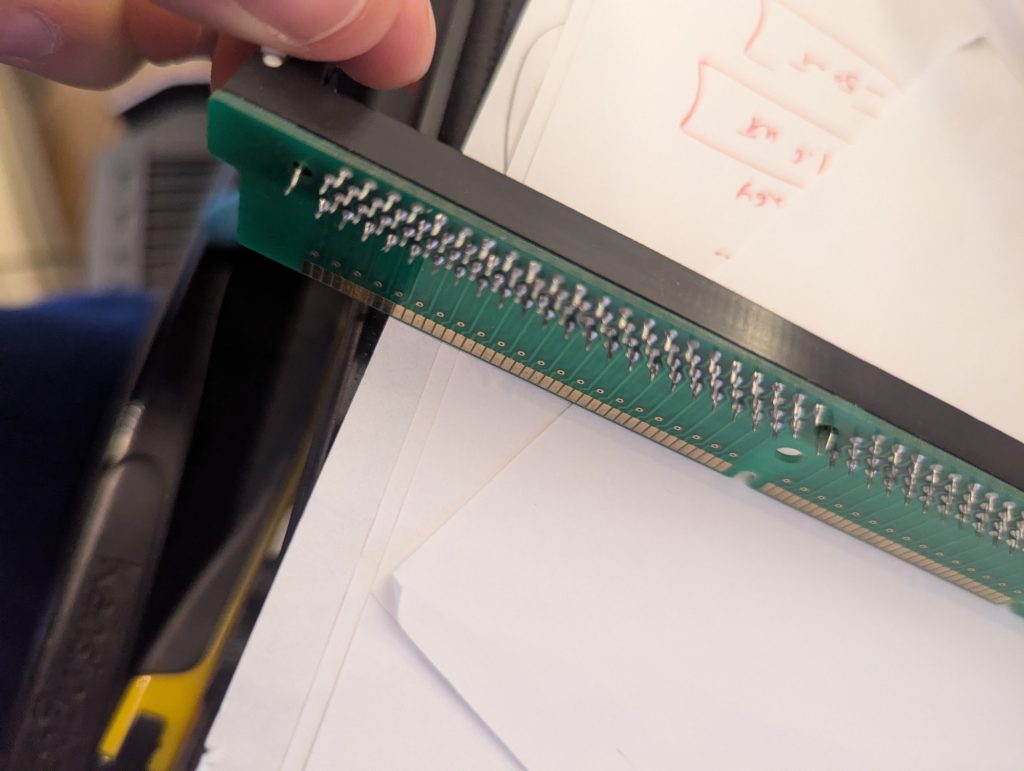
The installation went smoothly enough once I got the machine to boot. The internal optical drive had failed so I used another laptop optical drive I had around, but I had some issues getting the machine to recognize both the HDD and the optical because that spare laptop ODD did not have a jumper to set the IDE mode, still after I got the boot and both drives recognized I installed OS X server.
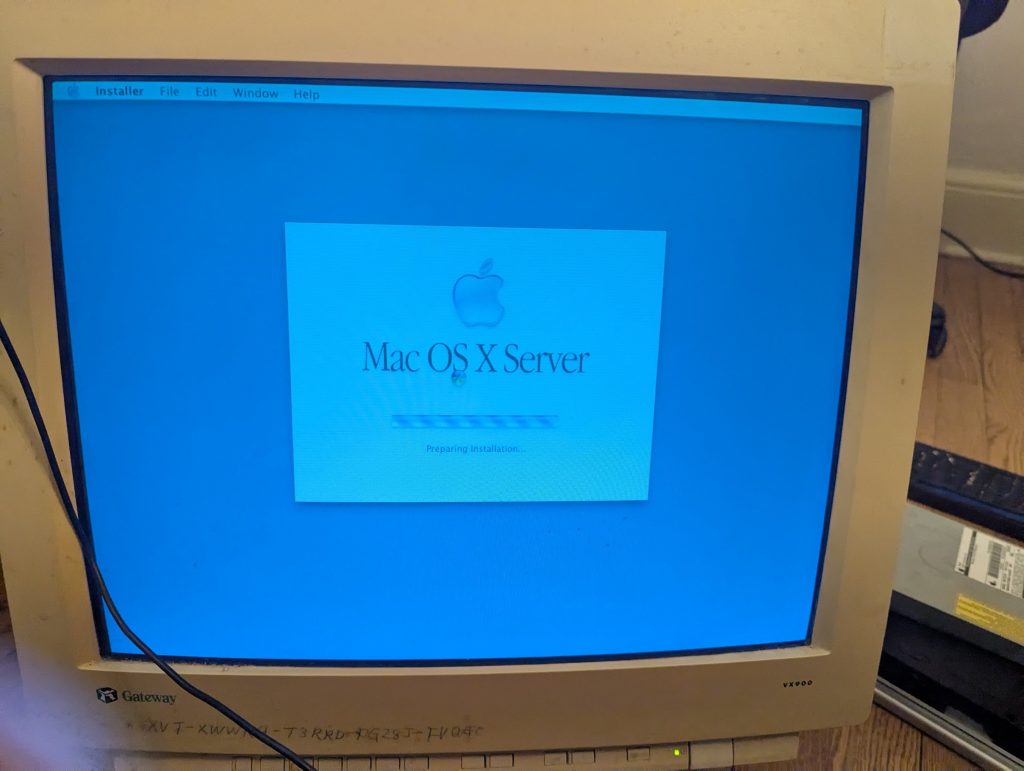
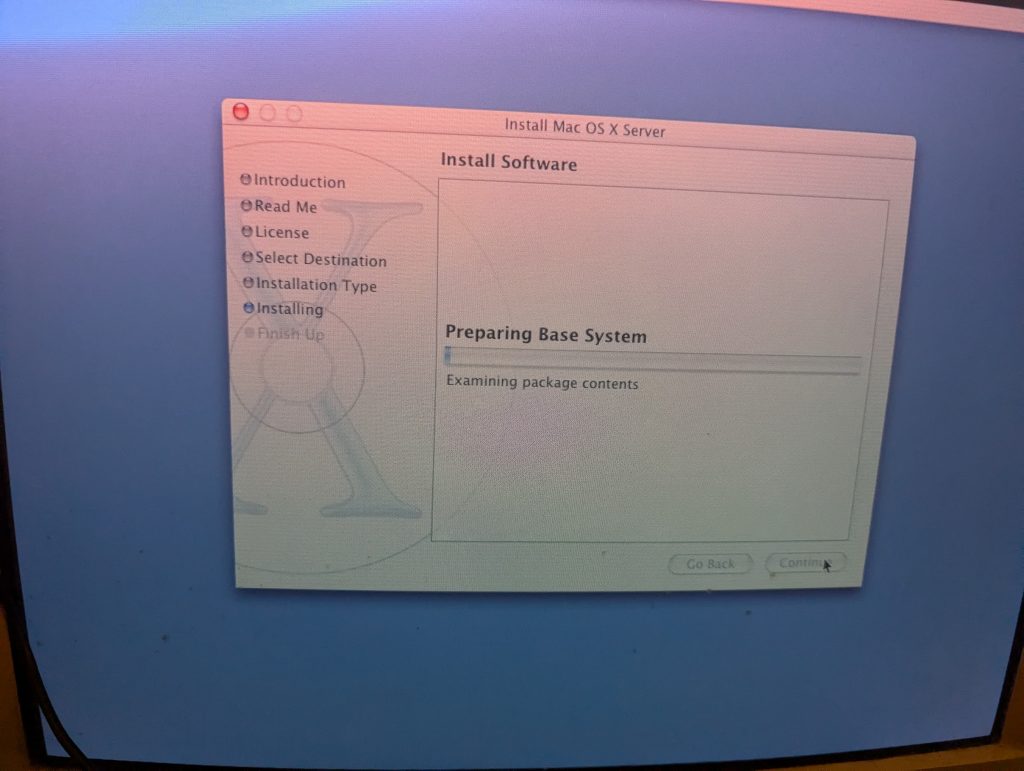
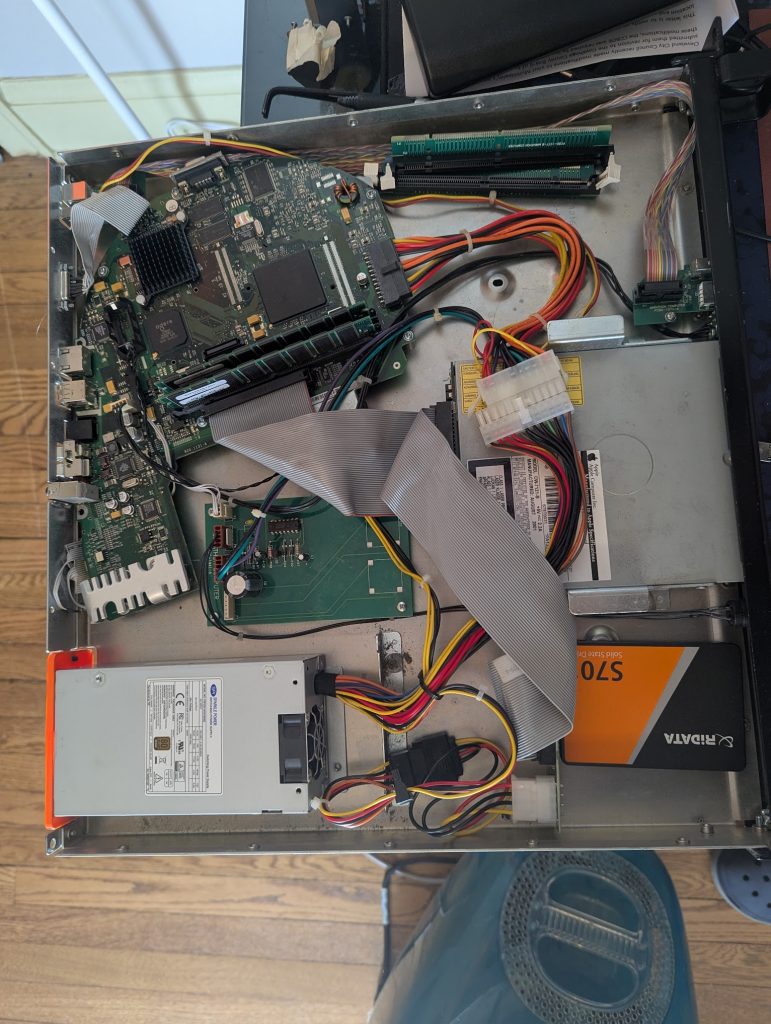

After configuring some basic network settings I got the machine online and was able to view the default landing page on my local network
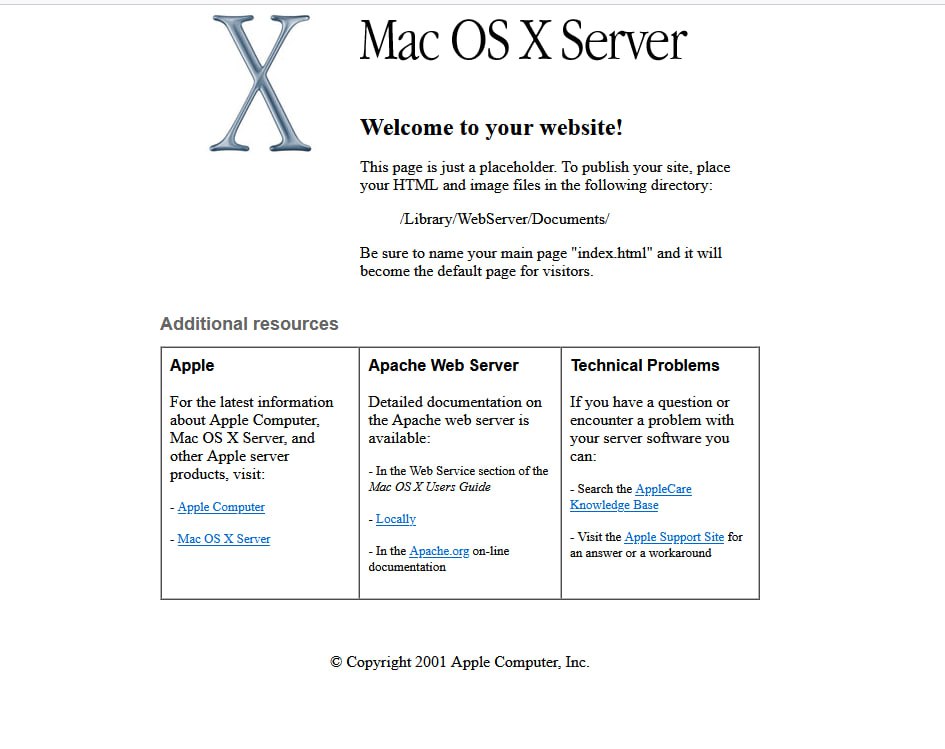
And even ventured out to the larger internet to check out frogfind
